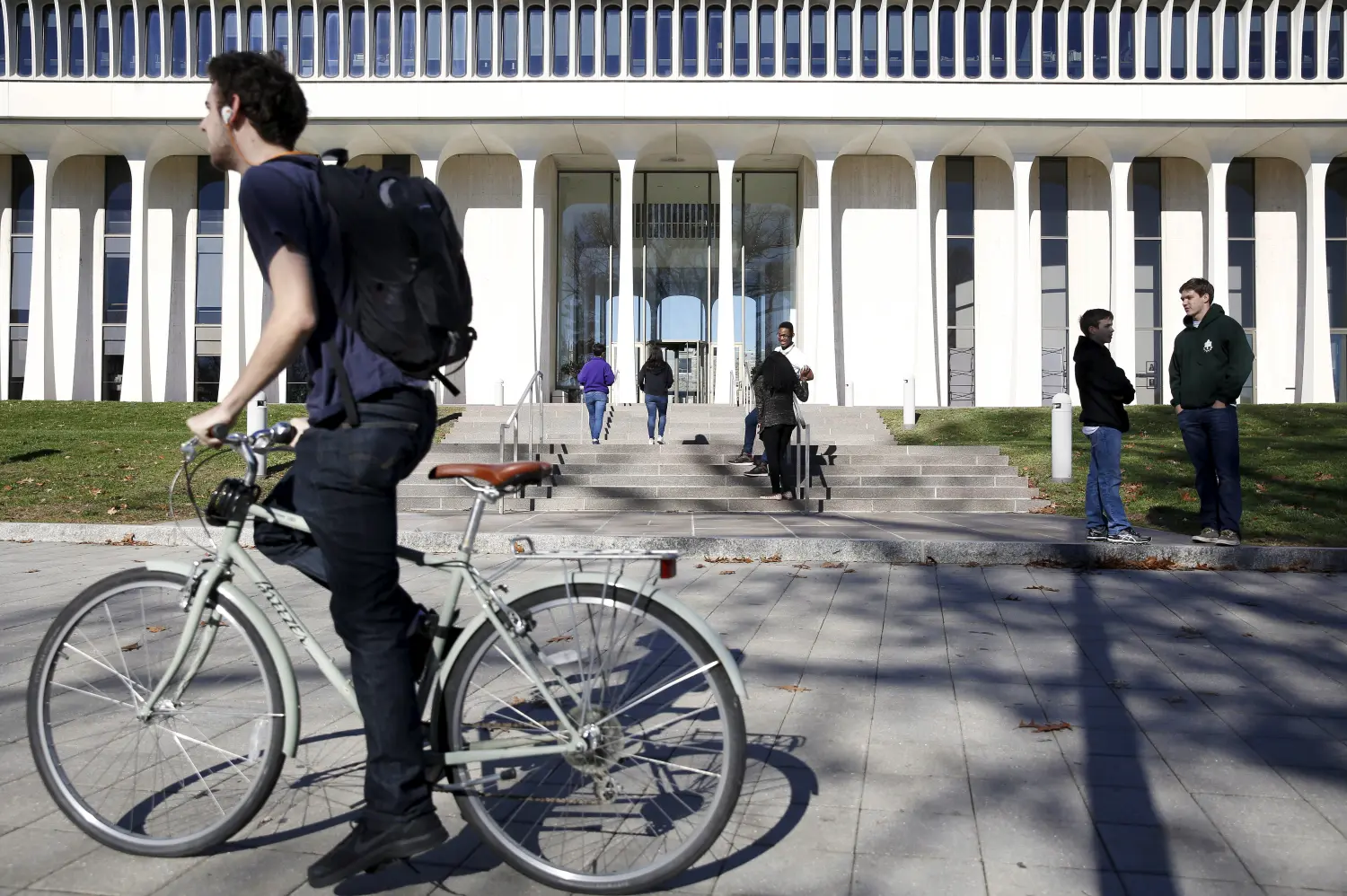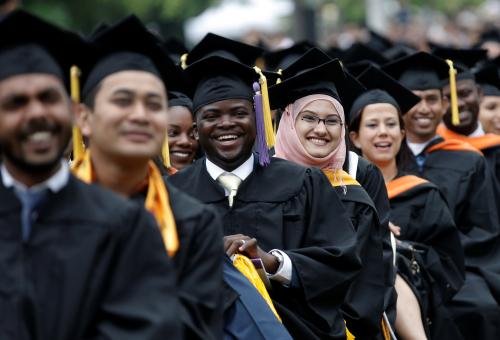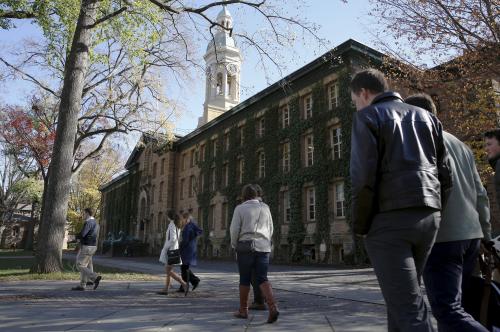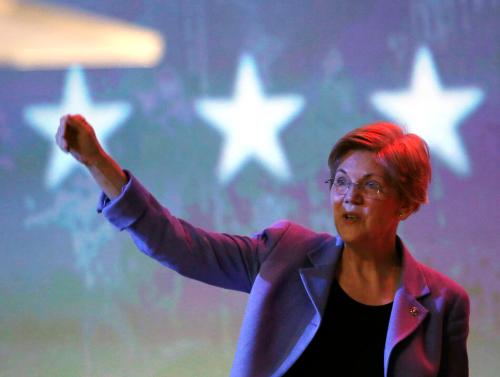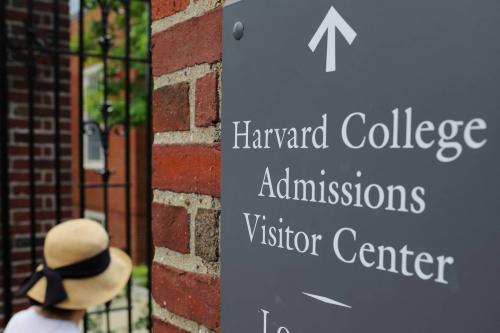Are lower interest rates the best route to a fairer, more effective student loan program? From the rhetoric heard in Congress and on the campaign trail, the answer appears to be “yes.” But both empirical evidence and economic theory show that lowering interest rates is a blunt, ineffective, and expensive tool for increasing schooling and reducing loan defaults. There are much better ways to achieve these important goals.
Let’s step back and consider why government lends to students in the first place.
Education is an investment: it creates costs in the present but delivers benefits in the future. When students are in school, expenses include tuition, school supplies, and lost earnings. Benefits after school include increased earnings, improved health, and longer life. To pay the costs of their education, students need cash.
In a business deal, a borrower might put up collateral in order to fund a potentially profitable investment. The collateral would include any capital goods used in the fledging enterprise, such as a building or machinery. Similarly, homeowners put up their home as collateral when they take out a mortgage.
While there have been occasional efforts to offer student loans securitized by human capital (e.g., MyRichUncle[i]), none has moved beyond a small niche market. This is because it is very difficult for private parties to place a lien on (or even confirm) individual earnings.
This private market failure is one reason why government plays an important role in lending for education. Governments, through the income tax system, have the unique ability to both measure and collect income.
Given that federal loans are intended to correct a capital market failure, how should they be designed? What interest rate should be charged? If providing liquidity is the only goal of the loan program, loans would be provided at an interest rate that covers the government’s cost of making the loan. Taxpayers would seek neither to make money from these loans, nor subsidize them.
How do federal loans actually work? For some loans that go to lower-income students (subsidized Direct Loans), the interest rate is zero while the student is enrolled in college. For other loans, interest accrues while the student is enrolled. All borrowers pay interest on federal loans after leaving school. Interest rates on these loans are set by Congress, vary across the loan programs, and are a hot topic of debate. At times the rate has been fixed in nominal terms, and generated substantial subsidies for borrowers. During the late 1970s and early 1980s, when interest rates on mortgages were in the double digits, the interest rate on student loans was fixed at eight percent. This meant that student loans were an excellent deal. Borrowing surged, creating enormous costs for the government.
Today, interest rates on federal student loans are tied to Treasury bills. The 2013 Student Loan Certainty Act links interest rates to the Federal 10-year Treasury rate, plus a margin. For the 2015-16 academic year, interest rates are 4.29 percent for undergraduate Stafford loans and 5.84 percent for graduate loans. These rates do not float over the lifetime of a given loan.[ii] They differ by the year in which they loan is originated, but are then fixed for the life of a loan.
Could reducing these interest rates increase college enrollment? A lower interest rate reduces the lifetime costs of college, so a rational decision-maker would include this subsidy in a calculation of the lifetime, present-discounted value of schooling.
However, the evidence from behavioral economics suggests that tangible and salient incentives at the moment of decision-making are most effective in changing behavior. Interest-rate subsidies are not tangible when students are deciding whether to enroll in college: students are handed the same funds whether the loan’s interest rate is two percent, four percent or ten percent. The salience of an interest subsidy is an unsettled question; I know of no empirical study that estimates a causal relationship between college enrollment and the interest rate charged on student loans.
Can lower interest rates reduce loan defaults? In the standard, mortgage-style payment system, a lower interest rate reduces the monthly payments required to cover principal and interest. In this payment model, a lower interest rate could make loan payments more manageable for some borrowers and thereby reduce defaults. The effect is quite small, however, since loan payments are largely determined by principal, rather than interest. The ten-year payment on a $20,000 loan is $204 when the interest rate is 4.29%, and drops just twenty dollars (to $184) if the interest rate is cut to 2%.[iii] For a seriously distressed borrower, cutting the payment twenty dollars is unlikely to make much of a difference.
While an interest cut is unlikely to reduce default, it is extremely costly. Why? An across-the-board interest subsidy benefits every borrower, including those who have high earnings and no difficulty repaying loans. An interest subsidy is therefore a poorly targeted, expensive tool for reducing loan default in a mortgage-style repayment system.
In an income-based repayment system, such as Pay as You Earn, payments are a fixed percentage of income.[iv] The interest rate does not enter into the calculation of the monthly payment; it affects only the length of repayment. For a borrower with a given principal and lifetime income, a lower rate will reduce the time required to pay off the loan.
In an income-based repayment system, an interest subsidy arrives at the end of the repayment period: payments stop earlier than they would have otherwise. In a twenty-year repayment plan, for example, this means that a borrower might stop making payments when she is 42 rather than 43. But these are peak earning years, when the risk of default is relatively low. And while this early cessation of payments helps those who have low incomes even in middle-age, it also benefits borrowers who have attained very high incomes. An interest subsidy is therefore a poorly targeted, expensive tool for reducing loan default in an income-based repayment system.
If we want to increase college-going by lowering its price, evidence shows that grants and lower tuition are the right policy tools.[v] Cutting interest rates on student loans won’t get more students into college, and siphons off revenue from the grants than can do this important job.
If we want to reduce distress and default among student-loan borrowers, cutting interest rates is also the wrong policy. It does little for distressed borrowers while providing windfall gains to those having no trouble repaying their loans. A well-designed, income-based repayment plan allows borrowers to pay back their loans when and if they are able and is the best route to reducing default and distress.[vi]
[i] https://en.wikipedia.org/wiki/MyRichUncle
[ii] http://www.staffordloan.com/stafford-loan-info/interest-rates.php
[iii] https://studentloans.gov/myDirectLoan/mobile/repayment/repaymentEstimator.action
[iv] https://studentaid.ed.gov/sa/repay-loans/understand/plans/income-driven
[v] http://futureofchildren.org/futureofchildren/publications/docs/23_01_04.pdf
[vi] http://www.nytimes.com/2014/06/15/upshot/finding-shock-absorbers-for-student-debt.html?_r=0

